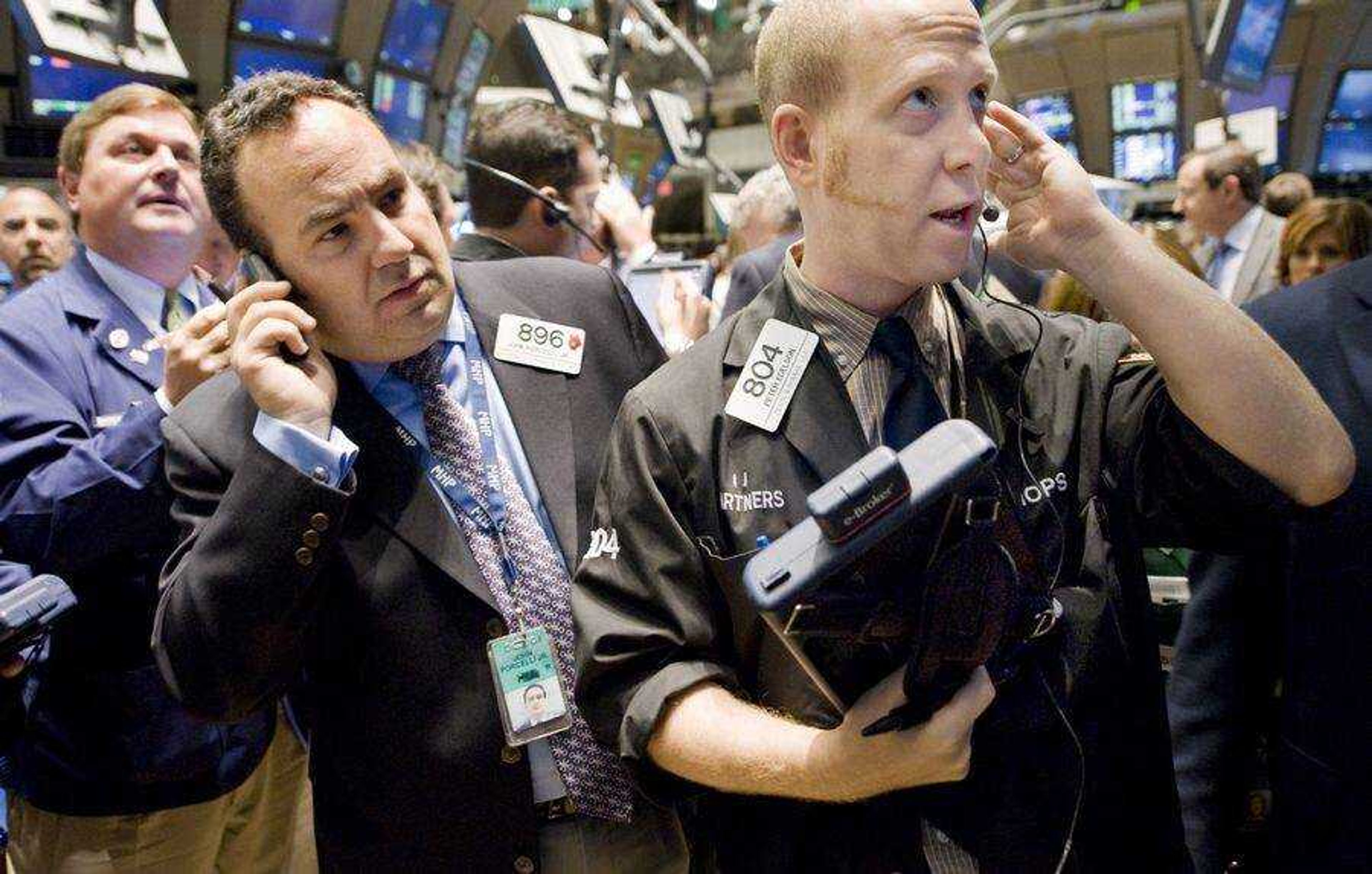Dow surges 485 points after biggest sell-off in years
NEW YORK -- Wall Street snapped back Tuesday after its biggest sell-off in years amid growing expectations that lawmakers will salvage a $700 billion rescue plan for the financial sector. But the seized-up credit markets where businesses turn to raise money showed no sign of relief...
NEW YORK -- Wall Street snapped back Tuesday after its biggest sell-off in years amid growing expectations that lawmakers will salvage a $700 billion rescue plan for the financial sector. But the seized-up credit markets where businesses turn to raise money showed no sign of relief.
One day after the biggest point drop in its history, the Dow Jones industrial average rose 485 points, or more than 4.5 percent -- the latest in a string of volatile days in the stock market. It was third-biggest point gain in the Dow's history and the biggest percentage climb in the Dow in six years.
The recovery in stocks wasn't unexpected as carnage on Wall Street often attracts bargain hunters, though questions remain about how investors will proceed. Without a bailout plan in place to absorb soured mortgage debt and other bad loans from battered banks, investors are left wondering what might restore confidence in lending.
Major stock indexes were almost a sideshow during the session, with the credit markets as the main event. A key rate that banks charge to lend to one another shot higher, a tightening of the availability of credit that could cascade through the economy.
Traders on the floor of the New York Stock Exchange, still stunned from Monday's 778-point fall in the Dow, warned that the government needs to approve a plan that will sweep away the fears that hobbled the credit markets. While U.S. political leaders have vowed to revisit the issue, the House isn't slated to meet again until Thursday.
"If it doesn't pass, then look out below," said Jason Weisberg, an NYSE trader for Seaport Securities. "It could get ugly."
Though the blue-chip index rose sharply Tuesday, the main worry for traders is that a lack of a plan will make it nearly impossible for some companies to fund basic operations like making payroll. Participants in the credit market buy and sell debt that companies use to finance operations.
The benchmark London Interbank Offered Rate, or LIBOR, that banks charge to lend to one another, rose sharply Tuesday, making it more expensive and difficult for consumers and businesses to borrow money. In addition, credit card debt and more than half of adjustable-rate mortgages are tied to LIBOR, so an increase isn't welcome for many consumers.
LIBOR for three-month dollar loans rose to 4.05 percent from 3.88 percent Monday. LIBOR for three-month euro loans, meanwhile, rose to 5.27 percent, from 5.22 percent Monday.
Critics of the bailout package believe it was too costly and wouldn't have done enough to jump-start lending.
On Wall Street, many traders likely will proceed cautiously while they gauge prospects for resurrecting the bailout effort, which was backed by leaders of both parties.
"I'm not getting the sense that investors are going to be jumping in with both feet until there is some kind of resolution on the plan," said James Maguire, an NYSE floor trader with Christopher J. Forbes. "If there's a no vote, we're going to see a lower overall drift in stocks. It will be a slow bleed."
Tuesday marked the final session of the third quarter -- and what is typically the worst month for the stock market -- so some portfolio managers might have been eager to dress up their performance.
The Dow rose 485.21, or 4.68 percent, to 10,850.66 after falling nearly 7 percent on Monday to its lowest close in nearly three years. It was the largest point drop and 17th largest percentage drop in the blue chip index. The percentage decline was far less severe than the 20-plus-percent drops seen in the stock market crash of October 1987 and before the Great Depression.
Broader stock indicators also bounced higher. The Standard & Poor's 500 index recovered 58.35, or 5.27 percent, to 1,164.74, and the Nasdaq composite index rose 98.60, or 4.97 percent, to 2,082.33.
The S&P fell 8.79 percent Monday, while the Nasdaq lost 9.14 percent.
The yield on the three-month Treasury bill rose Tuesday to 0.89 percent from 0.14 percent late Monday. The yield fell Monday as investors clamored for the safety of government debt. The yield on the benchmark 10-year Treasury note, which moves opposite its price, rose to 3.83 percent from 3.58 percent late Monday. The dollar rose against other major currencies and gold prices advanced.
While investors focused on what might come from Washington this week, Wall Street was cheered by several economic readings.
A private research group reported that consumer confidence rose unexpectedly in September. The Conference Board said Tuesday its Consumer Confidence Index rose to 59.8 from a revised 58.5 in August; Wall Street had expected a reading of 55.5, according to Thomson/IFR. The reading, which doesn't reflect attitudes following Monday's steep stock market sell-off, remains near a 16-year low.
The Chicago Purchasing Managers' index, which measures business conditions across Illinois, Michigan and Indiana, came in at 56.7 compared with 57.9 in August -- a second straight month of a strong reading.
Light, sweet crude rose $4.27 to settle at $100.64 on the New York Mercantile Exchange. Oil fell more than $10 a barrel Monday as investors worried that a weaker economy would curtail demand.
Advancing issues outnumbered decliners by about 2 to 1 on the New York Stock Exchange, where volume came to 5.84 billion shares by the closing bell.
The Russell 2000 index of smaller companies rose 21.86, or 3.32 percent, to 679.58.
Overseas, Japan's Nikkei stock average fell 4.12 percent. But Hong Kong's Hang Seng index rose 0.76. Britain's FTSE 100 rose 1.74 percent, Germany's DAX index added 0.41 percent, and France's CAC-40 rose 1.99 percent.
Connect with the Southeast Missourian Newsroom:
For corrections to this story or other insights for the editor, click here. To submit a letter to the editor, click here. To learn about the Southeast Missourian’s AI Policy, click here.






